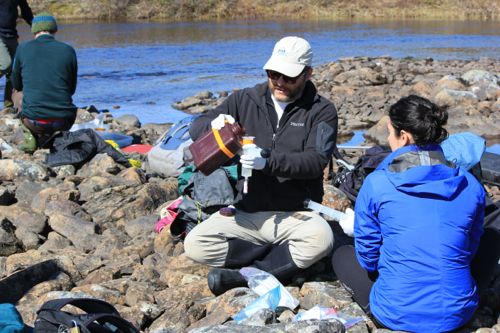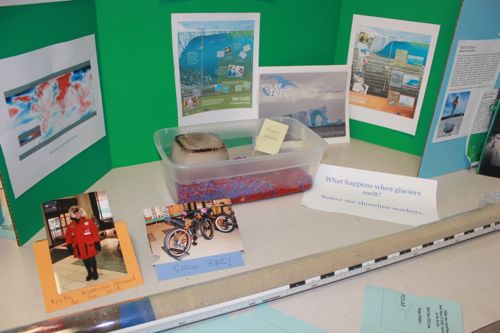I feel very fortunate to be part of the PolarTREC program. Many have asked how I got involved with the program. A long chain of events brought me to the Arctic.
My training in polar science began seven years ago. I was asked to teach an environmental science elective class at our middle school. This would be a new class, and there was no curriculum. I spent the summer searching for lessons and hands-on activities to use with students. My goal was to get students outside, into the environment, as much as possible.
I discovered the GLOBE (Global Learning and Explorations to Benefit the Environment) program and was hooked. GLOBE asks students to get into the field, make observations, collect data, and share the information online with an international community of researchers and educators. (see globe.gov) The emphasis is on following standardized protocol to ensure consistent data collection no matter where in the world the data is being collected.
 GLOBE Logo
GLOBE Logo
I am ever grateful to Elena Bautista Sparrow of the University of Alaska, Fairbanks, for inviting me to participate in GLOBE training in Fairbanks, and to Martha Robus Kopplin for her continued support and encouragement.
I learned how to observe weather and clouds. Students collected data for the CloudSAT program. I learned to monitor and quantify leaf color. My students went on to track bud burst dates of campus trees, and document that this event occurs earlier each year. I also learned how to take water quality measures. Students used these skills to monitor seasonal changes in a vernal pond near our school. Also, because of this training, I can understand at least the basics of what some researchers here at Toolik Field Station are studying.
 Testing Water in the Field
Testing Water in the Field
Students enjoyed going to the pond and going outside to observe the trees. For teachers reading this, take the extra step and get your students outside! Yes, there are some class management situations to deal with, but set clear expectations for student behavior and have clear consequences for students not behaving well. You will give the students memorable experiences, and teach them to become observers of the natural world around them.
My students' pond study data were presented in a poster at the 2010 International Polar Year (IPY) meeting in Oslo. At this meeting, teachers were trained to bring polar science lessons to the classroom. Excellent polar science lesson plans and videos can be found on the ANDRILL (Antarctic Geological Drilling) site: http://andrill.org/education/
 Polar Science Lesson Materials
Polar Science Lesson Materials
At the IPY meeting, I was introduced to more polar scientists and teachers, and found out about the PolarTREC program.
Now here I am, on the Alaskan tundra. I hope that, from my experiences, students will become more aware of their local environment, learn how Earth's systems are interrelated - nothing exists in isolation, and learn to step outside of their own comfort zone and take advantage of many opportunities for learning that are available.

